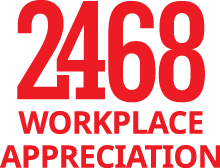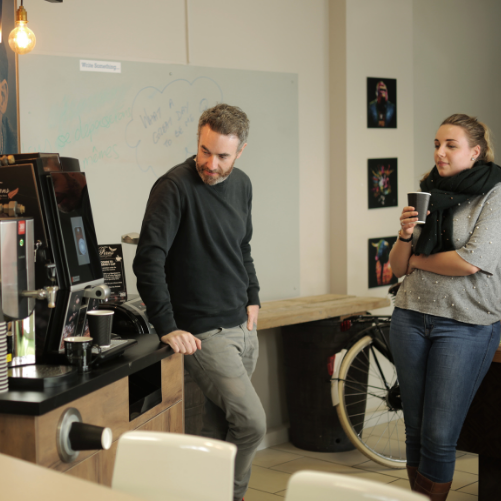Much has been written about changes to the workplace, already in evolution but greatly accelerated during the extended Work from Home (WFH) experience as a result of the coronavirus pandemic. We’ve taken a look at research into the workplace of the future and how it may look – in 2021 and beyond.
In 2020’s great ‘Work from Home Experiment’ organisations and business moved to a remote mode of operating in a transition that took place at lightning speed, relatively speaking. In the UK over half of all employed adults worked from home for part of last year – the figure prior to 2020 was just 16%. Organisations that were skeptical of the impact on efficiency had their concerns alleviated as business worked on.
According to Gensler and Microsoft research productivity levels grew for most remote workers. Leesman UK’s working from home survey also found that the majority – 82% of 127,000 workers they surveyed felt they worked more productively from home. Gensler research among 10,000 workers found engagement, satisfaction, and job commitment were all higher among people who spent at least portion of a typical work week outside the office.
Now according to US research at end 2020 up to 67% of office workers would prefer to from home part-time on a permanent basis. In Ireland the CSO survey among Irish workers confirmed 6 in 10 workers are seeking a hybrid in office/at home working schedule and the government plans to legislate on their rights and protections in this new system. Several global companies including Twitter, Novartis have formally announced a permanent work from home option for employees.
So it’s all looking very positive for working from home at least part of the week.
But looking more deeply, WFH is not actually possible for everyone and not beneficial every task. In particular collaborative tasks, critical decision making, counselling, training, and social interaction all suffer when attempted remotely.
The fact is also that working from home is an option only for particular jobs and in more developed economies. McKinsey research suggests that that only around 22% of UK workers will be in a position to work 1-2 days from home on a permanent basis. And that more than half the UK workforce have little or no opportunity for remote working.
However the standard work week based on five x 9to5 days in the office is likely not to return as a standard mode of office working. The office will continue to have importance as a place to come together for a common purpose and for particular activities, but pandemic accelerated changes in the workplace and its role, some of which will be permanent. We look at several of these changes and how workplace services should adapt.
Workplace home for collaborative activity
McKinsey research carried out among 800 roles across 2000 tasks in late 2020 illustrated top reasons UK, US and European workers have to come to the office. These include to collaborate in person with colleagues, to socialise and interact, for impromptu face to face time, to be part of a community and for scheduled meetings. CIPD UK found that in person training and learning, coaching, performance reviews and business-critical decision making all suffered when carried out remotely.
Real Estate and Facility Management Company JLL research looks at how the workplace of the future will be restructured to respond to changes already having an impact. Based on a survey of 360 of their own corporate clients, JLL estimate that organisations will reduce their overall real estate footprint but will reorganise their space, to give greater proportion of space to collaborative activities for which the office will be essential. It will be important to identify the nature of these activities and the proportion of time – and space given to them to get the ratio right.
By surveying employees and researching different roles’ needs in terms of collaborative versus individual tasks organisations can understand how the workplace can be designed into the future. In this way the gains in productivity through home based working can be mirrored by gains in collaborative working in person in the offiec.
Wellbeing of employees
Providing for employee wellbeing contributes to business growth by boosting productivity, engagement, talent recruitment and retention. This has been well established in research over the last decade and most growing organisations, particularly in the developed world have responded to it with a steady growth in levels of investment in employee wellbeing programmes and facilities.
2021 will see an even greater emphasis on wellbeing, as employee health & safety concerns are addressed short term and wellbeing is supported in the medium to long term. Indoor Air Quality monitoring, proper ventilation and air cleaning technology are becoming standard expectations, and the health of buildings is more widely understood with standards like the WELL building standard.
Wellbeing in the short term takes in the immediate concerns for personal health and safety, reported to be a chief concern for employees returning to the workplace, by CIPD in 2020. Enhanced janitorial standards with more frequent cleaning schedules will be expected and the emphasis on decontamination processes will be retained.
But longer term employee wellbeing will need to remain of concern for employers as employees awareness of personal wellbeing has heightened during lockdown. A focus on mental health will also be need to be supported as part of overall wellbeing programmes as for some workers the return to the workplace will require some reskilling or reintroduction support. Essentially workers will expect wellbeing to be factored into every decision and research suggests this area is a top investment priority for the majority of organisations.
Catering for diverse working weeks & days
Whatever the percentage split between in office and remote it seems likely it will take some time for workplaces to return to a standardised working week with full attendance. As well as reorganising space to accommodate the specific needs of those in the workplace, employers need to look to technology to support this more agile structure.
Workplace management technology such as room booking and occupancy trackers will help to manage shared spaces effectively. Workplace apps which allow employees to find colleagues, book rooms, book lunch will become more commonplace. The data generated from this technology will allow facilities management to track energy, building performance, user needs and usage patterns of every aspect of the workplace.
And to sustain a workforce on different schedules and working weeks, organisations will invest in high quality unattended retail solutions to provide a wide range of ready to eat sustenance – 24/7.
Micromarkets and ‘café cooler’ style vending will allow employers to provide quality fresh meals from local suppliers, ready to heat ‘n eat or grab ‘n go for employees. A low staff requirement, outside of stocking and maintenance, and reduced waste makes these a smart and safer alternative to busy single room cafeterias.
Designing the office to return
Leesman UK provide fantastic insight into the workplace experience, as they have a huge data set of over 700k respondents. This past year Leesman turned attention to working from home experience, researching among 127,000 respondents. Their research confirms that this is a key time for employers to invest in providing an outstanding office experience, in order to attract workers back in as frequently as possible.
Small wins include refreshing amenities, building in the brand and its values as part of design- the personalised coffee bar or snack zone. This adds to the sense of a community experience, missed by many when isolated from the office. It’s important to ask what the workplace can say about the organisation and these nudges help support the return to work by celebrating what’s special about the organisation.
Productivity levels, stagnant for some years, received a boost in the work from home experience. With the imminent arrival of vaccines enabling a return to work it’s still likely that a hybrid of working from home and in the office will be a preference for staff accustomed to missing the commute and working productively at home. This may be a preference for some employers wanting to derive efficiencies in space.
What’s important for employers is to focus on the function the workplace fills for their staff, and to improve it to attract staff back in for those activities proven to benefit from in person presence. This way gains in productivity through work carried out remotely can be matched by gains in in-office work.
Talk to us if we can help with your workplace experience to plan for a ‘Welcome Back’ refit of refreshments & collaboration spaces, or our new micromarket and ‘cooler cafe’ solutions.



